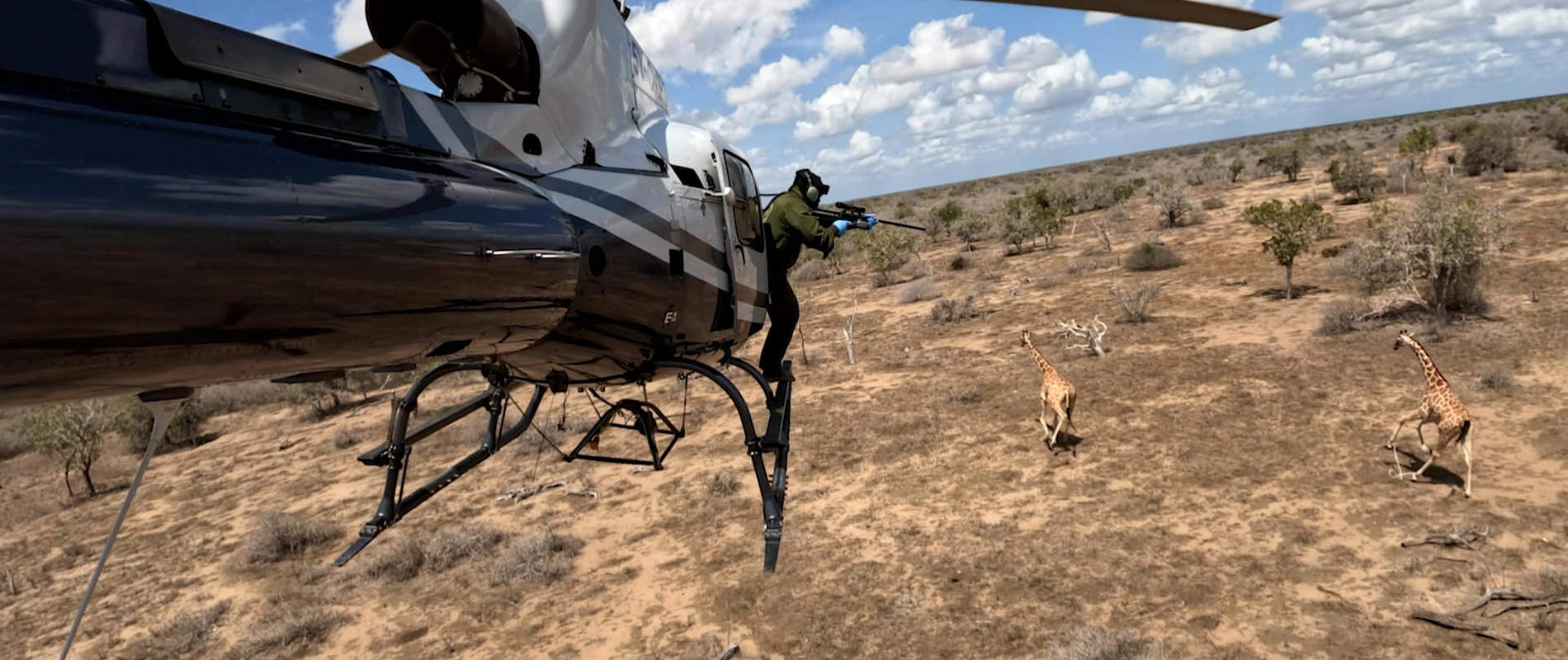Treating any wild animal comes with its fair share of difficulties, but giraffes raise the stakes — quite literally — to another level. Their anatomy creates a plethora of potential hazards and challenges, for both the patient and the people helping it.
Giraffes move at a dizzying clip, making it difficult to dart them without aerial support. Their long, slender legs are prone to breaks, while an equally lanky neck is susceptible to whiplash. Fragile as these limbs are, they are also extremely powerful — a well-aimed kick or neck swing can have fatal consequences for anyone in their range. To further complicate matters, giraffes cannot be put under complete anaesthesia, because oxygen delivery to the brain would be lethally low, so they must be treated under mild sedation.
Unfortunately, giraffes are increasingly common patients for our SWT/KWS Mobile Veterinary Units. The same limbs that pack such a powerful punch are also perfect targets for snares. Set by bushmeat poachers, they loop around a slender leg or neck, causing too many of these giant creatures to lose life and limb.
Such was the fate of this female giraffe, who was reported by rangers on Ishaqbini Conservancy on 10th September. After receiving a call from the warden of Ishaqbini, our helicopter flew the SWT/KWS Tsavo Mobile Vet Unit to the scene. Given the remote location, coupled with the inherent challenges of darting and treating a giraffe, this would be an aerial treatment.
Flying low over the wilderness, the team found the patient standing among a tower of 14 giraffes, a thick rope snare coiled taut around her leg. After briefly touching down to regroup with Ishaqbini rangers and prepare the anaesthetic dart, the pilot and Dr Limo took flight once more.
Running at full tilt, giraffes can reach speeds of 60 kilometres per hour. This makes it impossible to dart them from the ground — but it is no easy task from the air, either. It takes agile piloting and excellent aim to land the anaesthetic from a helicopter. While the giraffe sidestepped the first shot, the second attempt was a success.
The anaesthetic is dosed to make the giraffe just woozy enough to restrain, without fully knocking them out. Once the dart has landed, ground teams run in to carefully pull the patient down with a rope. This female, however, took control of her own destiny. She tripped on a bush, which cushioned her fall and sent her slowly tumbling to the ground.
Immediately, the team converged to administer the anaesthetic reversal. Meanwhile, several rangers held down her head, to protect her from breaking her own neck or causing brain damage. This also prevents the patient from standing up prematurely: As soon as her head was upright, she would have all the power and potential to swing to her feet.
The treatment itself was very straightforward. Left untended, the snare would have caused a grievous, potentially fatal wound. However, it was very fresh and had not yet sliced into the skin. After cutting off the rope, the giraffe was ready to rejoin her friends. Because of a speedy response, this four-year-old female now has her whole life ahead of her.
